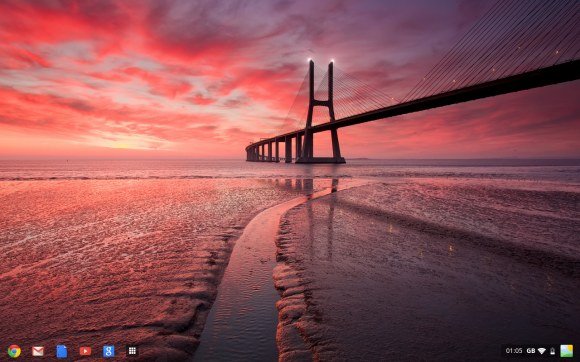Remember Chromebooks? Yes, those machines introduced by Google earlier with humorous advertisement and with a dedicated operating system? No? Okay. It’s not your fault as Chromebooks have gone into near oblivion. Chromebooks run the Chrome operating system by Google, who says it’s neither a laptop nor a notebook.

The latest Development Channel release of the Chrome OS includes Aura, the new Windows Manager, that brings along many features of a desktop OS, such as a desktop with wallpapers and transitions, taskbar, apps and their icons on the taskbar, etc. However, on a closer look, you’ll be surprised that a few elements appear to be very similar to Windows 7, a desktop OS from Microsoft… well the desktop atleast looks similar …!
According to Chrome engineers, Aura is a hardware-accelerated “user interface framework for Chrome UI” that offers “rich visuals, large-scale animated transitions and effects that can be produced only with the assistance of hardware acceleration”. Aura is cross-platform and should “provide the foundation of a flexible windowing system and shell for Chrome and ChromeOS on a variety of form factors”.
The taskbar consists of semi-large icons which get underlined if that particular application is open. New icons can be added to the taskbar, or should we say, ‘pinned’ to the taskbar. In Windows 8, the first icon on the taskbar by default is of the Internet Explorer. In the Chromebook, the Internet Explorer icon is replaced by Google Chrome. No points on guessing that the UI too looks so much ‘Windows 7’.
As they say, imitation is the sincerest form of flattery. In this Microsoft-Apple-Google ecosystem, a lot of copy-paste does happen. But when Google said that this new Chromebook would be totally different from the rest, people expected a new look, features, UI, etc.
Well, what shape the Chrome OS takes finally, only time will tell! Incidentally, the latest Chrome OS release is only available for Samsung and Acer Chromebooks.
Via.
I think it’s just the convention these days. I mean, people said that Windows 7 copied Mac OS X’s Dock but now no one even cares about it.
It’s normal for companies to copy ideas from other companies. Otherwise further creativity is limited.
Fun to read this and then seeing a ‘Translate this site’-button, powered by Micros… Oh! NO! I mean Google 🙂
Microsoft – Your embarrassing yourself!